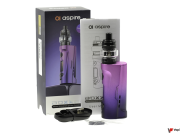Titled, “Vaping And Sars-Cov-2 And Covid-19 Technical Information For Vapers,” the document offers a detailed account of the all the possible links between vaping and COVID-19, and points out that besides the current obvious pandemic, there is also second pandemic of misinformation.
The researchers, Roberto Sussman from the Institute for Nuclear Sciences at National University of México and Director of Pro-Vapeo México, and Carmen Escrig, who is specialized in Virology and is a Coordinator of the Medical Platform for Tobacco Harm Reduction in Spain, started off by referring to a study by renowned anti-vaping crusader Professor Stanton Glantz, which put vaping and smoking on equal footing as serious risk factors for the progression to COVID-19.
This review was “extremely superficial, biased and selective”
“Moreover, Gotts et al (and Glantz quoting them) interpret the results in a very selective manner. A representative example of their modus operandi is furnished by their assessment of the results obtained by one of the revised studies by Saudt et al [5]. From Glantz’s exact quote of Gotts et al we have : ‘Healthy non-smokers were exposed to e-cigarette aerosol, and bronchoalveolar lavage was obtained to study alveolar macrophages. The expression of more than 60 genes was altered in e-cigarette users’ alveolar macrophages two hours after just 20 puffs, including genes involved in inflammation.’”
The researchers added that Gotts et al and Glantz omitted mentioning that the effects examined in [5] were acute and that the same study reports that “No significant changes in clinical parameters were observed.” Sussman and Escrig pointed out that this study conflated the risks of vaping and carelessly, ignoring all contrary or critical evidence.
One should note that the Journal of the American Heart Association has recently had to retract a study by Glantz linking vaping to heart attacks, on grounds that it failed to prove the claims it made.
The main points of the current study are summarized as follows:
- WHY THIS DOCUMENT? The spread of the SARS-CoV-2 pandemic provides fertile ground for spreading misinformation on vaping. Vapers must be equipped with solid information and data to counterargue.
- ON SMOKING: The relation between smoking and the progression to severe conditions of COVID-19 is still uncertain, though identified vulnerability conditions for this progression (cardiovascular and respiratory disease, diabetes) in mostly senior patients are strongly correlated with long term harms from smoking.
- ON VAPING: There is no evidence that vaping (intrinsically) increases the risk of infection or progression to severe condition of COVID-19. When evaluating risks on vapers it is necessary to consider that most are ex-smokers or still smokers. Vapers with a long previous smoking history could exhibit conditions seen in vulnerable patients. However, this would not be an effect of vaping but of previous smoking. Since completely switching from smoking to vaping improves cardiovascular and respiratory conditions, smokers who switch to vaping are expected to have a better prognosis if infected by SARS-CoV-2
- ON PROPYLENE GLYCOL (PG) AS DISINFECTANT: Because of its hygroscopic nature PG vapor (not droplets) can act as environmental disinfectant wiping out pathogens under specific physical conditions. However, there is no evidence on whether this effect will work on SARS-CoV-2 and in the context of vaping.
- ON ENVIRONMENTAL VAPOR: While there are no reported and verified cases of contagion, the saliva droplets carrying SARS-CoV-2 virus are much heavier than the rapidly moving volatile droplets of exhaled vapor. Therefore, vapor exhaled by an infected vaper is likely to spread as much viruses as in normal respiration in the personal breathing zone, far less and far closer than spreading by sneezing or coughing.
- RECOMMENDATIONS: The precautions to prevent contagion from virus carried by e-cigarette vapor are the same “social distancing” measures recommended to all the population including non-vapers: avoid physical contact and proximity to others. For vapers specifically: vape with low powered devices, avoid vaping in public indoor spaces and in outdoor spaces vape at least 2 mts away from others.













